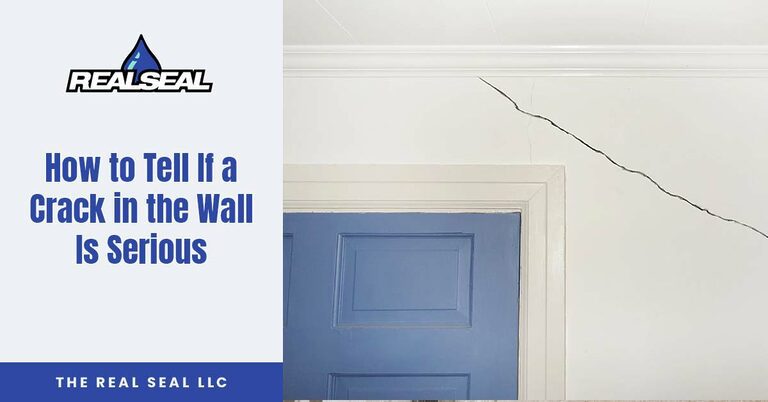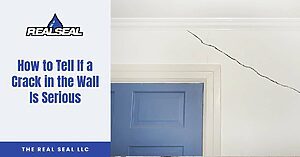While some hairline wall cracks are benign, a larger crack in a wall can be a sign of structural issues. In this blog post, we’ll explore the subtle (and not-so-subtle) signs that distinguish wall cracks which are merely minor cosmetic blemishes from cracks indicating potential structural threats. We’ll equip you with the knowledge to assess wall cracks, understand what causes them, and decide when it’s time to call in the experts.
What Causes Wall Cracks?
Wall cracks happen for various reasons, including uniform settlement after construction (common), shrinkage during the concrete curing process (for poured concrete foundations), and something more serious called differential settlement.
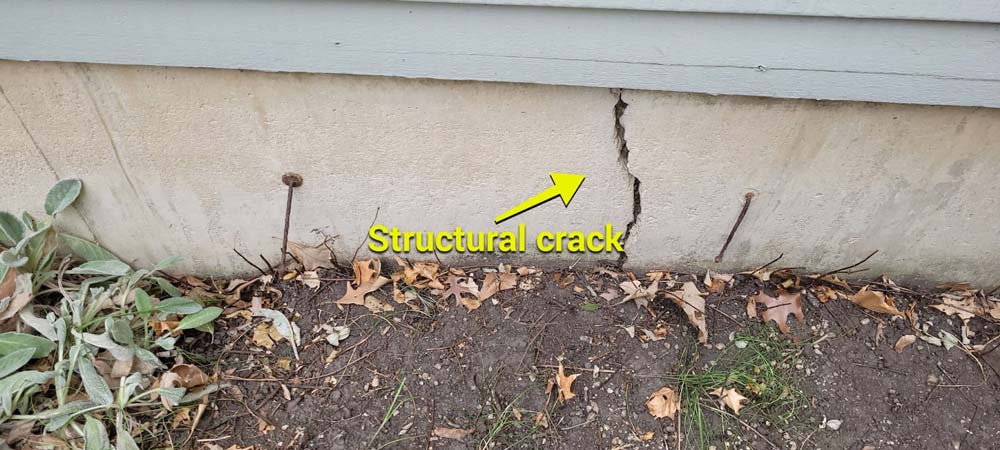
When Should You Worry about a Wall Crack?
Generally speaking, it’s time to get professionals involved if the crack is between 5-15 mm wide or getting bigger.
Structural vs Non-Structural Wall Cracks
Structural wall cracks indicate something more serious is happening behind the scenes, affecting your home’s structural integrity. Structural cracks almost always mean the foundation has moved. The movement could be due to differential settlement or hydrostatic pressure:
- Differential Settlement – All houses settle into the ground a bit after they’re built, and this isn’t a problem as long as the settlement is uniform. The problems start when the settlement is uneven. This is known as differential settlement. When one part of the home is settling more than another part of the home, it can lead to a lot of pressure being put on the foundation and the structure. Structural wall cracks are a sign that this may be taking place.
- Hydrostatic Pressure – Poor drainage around the foundation can cause hydrostatic pressure to build up and push against the foundation walls, leading to cracking and buckling.
Non-structural wall cracks are typically associated with the concrete curing process. Concrete naturally shrinks when it cures, leading to hairline cracks. Non-structural wall cracks are not as serious but can still cause problems, including allowing water to seep in. Therefore, they should be sealed.
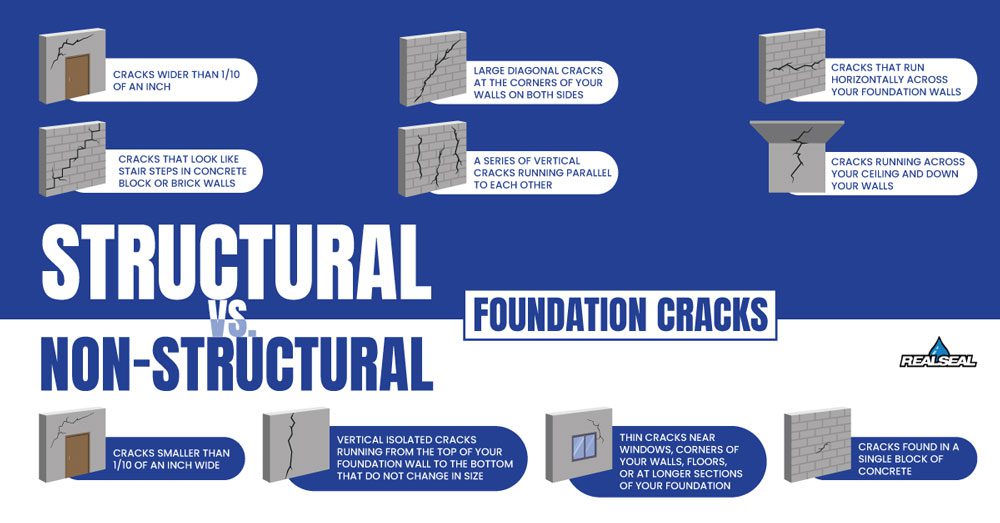
Types of Wall Cracks and Their Causes
- Horizontal – Hydrostatic pressure is the most likely reason horizontal cracks appear in foundation walls. As noted above, poor drainage can cause hydrostatic pressure to build up in the ground around the foundation and push against the wall, causing it to bow inward and even crack.
- Vertical Hairline – When you see vertical cracks, they should be monitored, but they are not often associated with foundation problems. They are usually caused by shrinkage during concrete curing. As noted above, they can allow water to enter a basement or crawl space.
- Stair-Step – Cracks that appear as stair-step are likely to be seen in masonry, block, or brick homes when foundation settlement occurs. They are a sign of significant foundation problems in most cases.
- Spiderweb Cracks – If you notice cracks in a spiderweb pattern, it is usually due to a problem with the concrete mixture when it is poured. They should be looked into, as they can allow water to enter a basement or crawl space.
Note the size and shape of all wall cracks, then carefully monitor them to ensure they’re not getting bigger. Sometimes, a crack that at first appeared to be non-structural ends up being structural.
Additional Signs of Foundation Problems
Cracks in a foundation wall (or any wall) often indicate foundation problems. If you see a wall crack look around for other signs there might be a foundation problem. These include the following:
- Sloping Floors – As the foundation settles, the floors may drop. Uneven floors aren’t often seen with the eye, but many homeowners feel it as they walk across the room. It may make you feel dizzy or as if you’re falling.
- Mildew Smell – If you smell mildew or have that ‘old house smell,’ you likely already have a mold problem. The damp conditions in many basements provide the ideal conditions for mold growth.
- Sticking Windows and Doors – Differential settlement stresses the home’s frame, including the frames around the windows and doors. The change in shape to the frame may cause windows and doors to stick.
- Cracked or Leaning Chimney – If you notice that the chimney is cracking, leaning, or separating from the home, it is a likely sign of foundation problems.
- Separation Between Wall and Floor or Ceiling – The torque on the house’s frame as the foundation sinks can cause the floor or ceiling to separate from the walls.
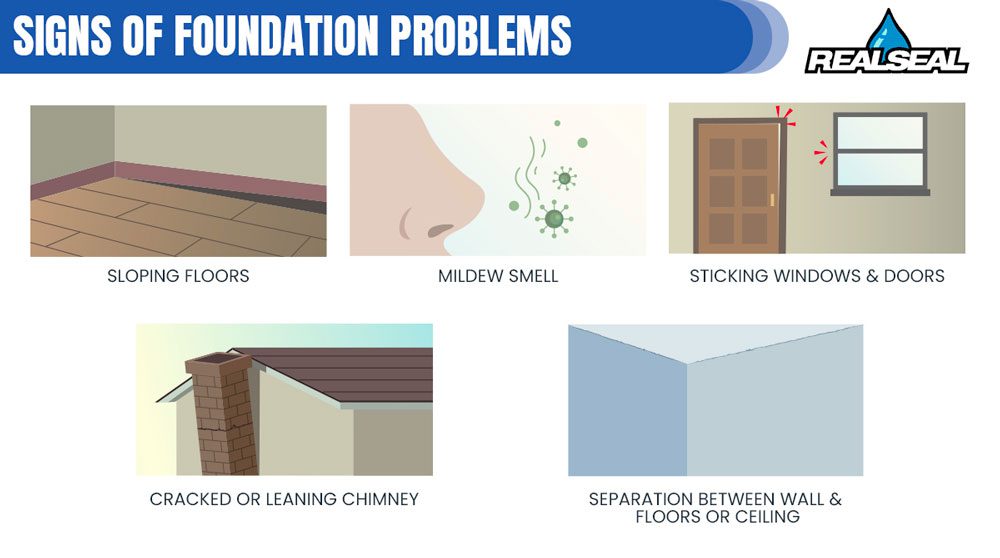
Can Wall Cracks Be Fixed?
Yes, wall cracks can be fixed. The chosen repair solution will depend on what caused the crack. Here are a few options:
Repairing Structural Cracks
A few different repair methods are available for structural cracks, including the following:
- Wall Plate Anchors – Plates can be placed inside the foundation wall and attached to an outside anchor plate with a steel rod. They allow the wall to be stabilized and straightened, reducing the crack and preventing further damage.
- Helical Tieback Anchors – These are similar to wall plate anchors but don’t require excavation for installation. As the helical anchor is inserted into the ground outside the wall, it strengthens and straightens it.
- C-Channel Anchors – These anchor plates may be installed to distribute the load across the wall rather than having pressure on one area. The steel beams are attached to the wall, and an outside anchor is connected to the beam using a rod.
- Carbon Fiber Straps – Carbon fiber straps can provide structural soundness to the wall where the crack exists. They can be painted over so they’re virtually invisible.
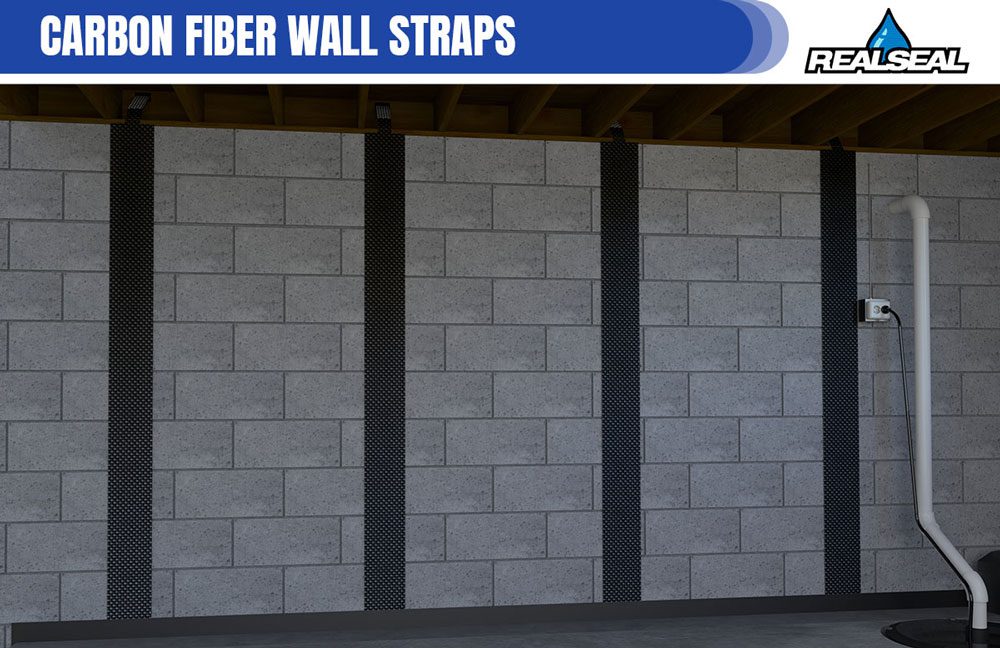
Non-structural Cracks
Non-structural cracks can be repaired using the following:
- Carbon Fiber Staples – These high-strength staples attach the two sides of the crack to ensure that the crack doesn’t continue to grow.
- Epoxy Crack Injections – A two-part epoxy is injected into the crack, filling it and sealing it permanently.
If you have problems with wall cracks in your Chicagoland home, it’s time to contact The Real Seal and schedule a foundation evaluation.
